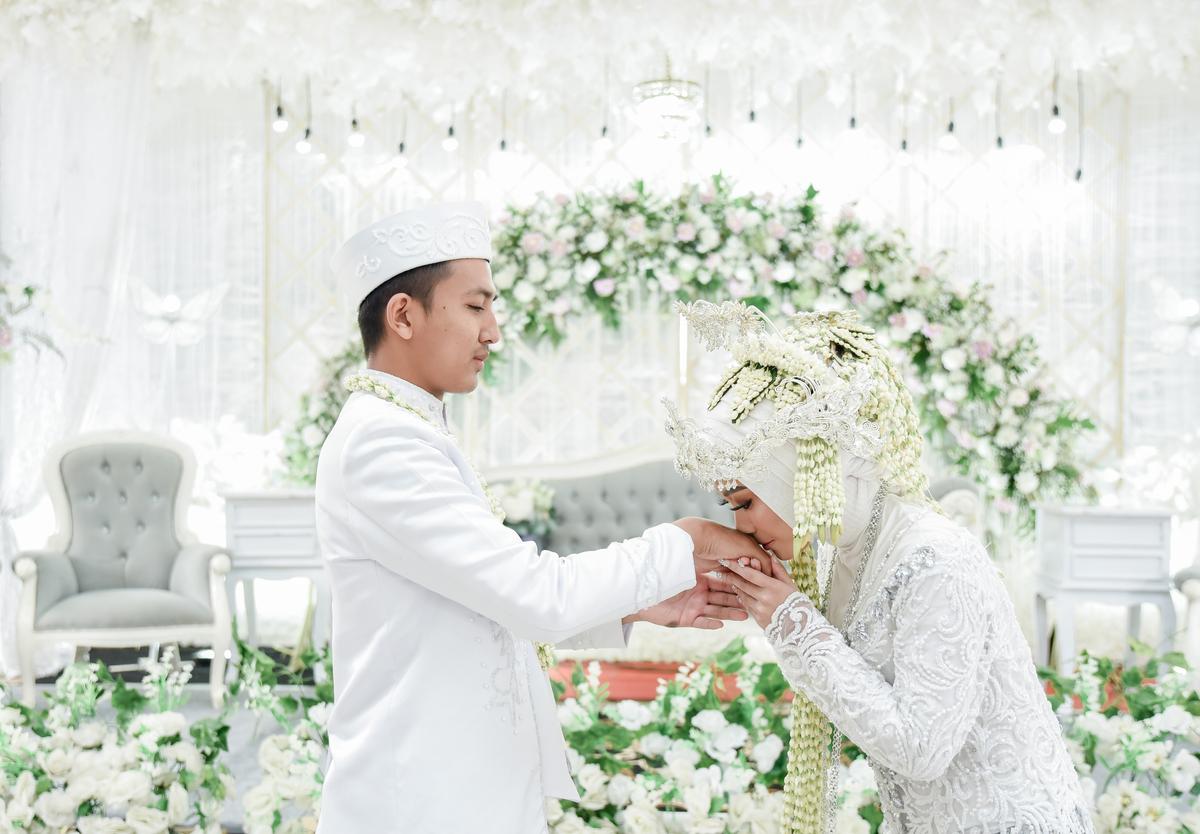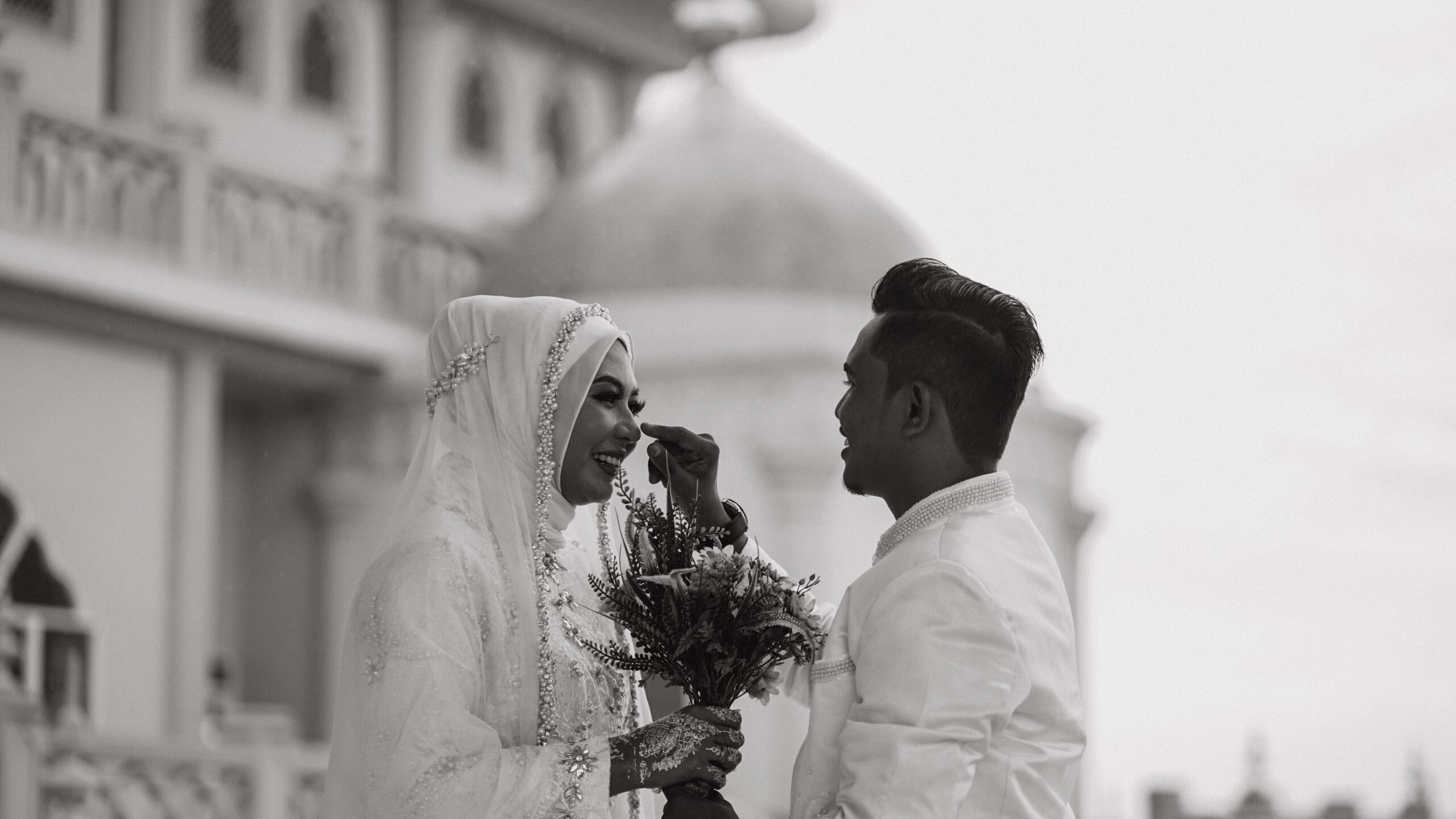In the vibrant tapestry of Muslim weddings, there lies an exquisite tradition that extends a heartfelt invitation to loved ones – the Muslim wedding card. These intricate pieces of art not only signify the joyous union of two souls but also encapsulate the essence of cultural values and religious significance. In this blog, we will delve into the most important aspects of Muslim wedding cards, exploring their traditional design elements, religious symbolism, inclusive language, personalization, and more. Let’s embark on a journey through the elegance of Muslim wedding cards.
- Traditional Design Elements: In Muslim culture, wedding cards are much more than just pieces of paper. They are crafted with immense thought and care, reflecting the heritage and customs that surround this joyous occasion. Traditional design elements such as the Bismillah (In the name of Allah), Allah’s name, the crescent moon, and stars are commonly found adorning these invitations. Each symbol holds deep religious significance and blessings for the couple’s journey ahead. Additionally, the art of Arabic calligraphy plays a prominent role, adding a touch of artistic grace to the cards. The choice of colours like gold, green, and blue further enhances the beauty of these cards.
- Religious Symbols and Verses: At the heart of every Muslim wedding card lies the spiritual essence that binds the couple in the eyes of Allah. Religious symbols like the Hand of Fatima (Hamsa) and the Enneagram are often incorporated to invoke blessings and protection. Moreover, verses from the Quran, such as Surah Ar-Rum (30:21) – “And of His signs is that He created for you from yourselves mates that you may find tranquillity in them; and He placed between you affection and mercy” – adorn the cards, symbolizing the sacredness of the union.
- Inclusive Language: As the world becomes more interconnected, modern Muslim wedding cards strive to embrace diversity and inclusivity. The language used in these invitations reflects this thoughtful approach. The use of inclusive language ensures that all recipients, regardless of their background or mother tongue, can understand and feel warmly welcomed. By breaking barriers through language, these cards embody the spirit of unity among diverse communities.
- Personalization and Customization: Every love story is unique, and Muslim couples cherish the opportunity to share their journey through their wedding cards. Personalization and customization have become a prevailing trend, allowing couples to infuse their distinct personalities, experiences, and preferences into the card design. From artistic representations of how they met to showcasing shared interests, the Indian wedding cards become a canvas that depicts their love in the most intimate and heartwarming way.
- RSVP and Additional Inserts: A wedding is not just a single event; it is a series of joyous celebrations. To keep guests informed and plan the events seamlessly, RSVP cards and additional inserts have become an integral part of Muslim wedding cards. The RSVP cards ensure that the couple can make necessary arrangements for their loved ones, while the inserts for events like Mehndi, Nikah, and Reception set the tone for each celebration.
- Quality of Materials: The grandeur of Muslim wedding cards is not limited to their design but extends to the quality of the materials used. The selection of premium materials adds a touch of luxury and elegance to the cards, making them true keepsakes for guests. Handmade paper, velvet textures, and glossy finishes are some of the popular choices that elevate the aesthetic appeal of these invitations.
- Eco-Friendly Options: As environmental consciousness grows, many couples are embracing eco-friendly choices for their wedding cards. Sustainable options like recycled paper, soy-based inks, and even digital invitations are gaining popularity, aligning with the Islamic principles of environmental stewardship and responsibility.
- Distribution and Etiquette: The distribution of Muslim wedding cards is a cherished tradition that requires adherence to cultural and religious etiquette. These invitations are often hand-delivered to close family members and friends as a gesture of respect and intimacy. However, modern times have also embraced technology, allowing for digital invitations to be sent across continents, bridging the gap for loved ones who cannot be physically present.
Conclusion
In the intricate world of Muslim weddings, wedding cards stand as remarkable testaments to tradition, culture, and love. The fusion of traditional design elements, religious symbolism, inclusive language, personalization, and high-quality materials make these invitations truly unique and special. As the world evolves, Muslim wedding invitations continue to adapt, preserving their elegance while embracing the values of diversity and environmental responsibility. Each card remains a cherished symbol of love and unity, inviting loved ones to be a part of a couple’s beautiful journey ahead.
Must Read – Step-by-Step Guide: How to Word Your Muslim Wedding Card Invitations








